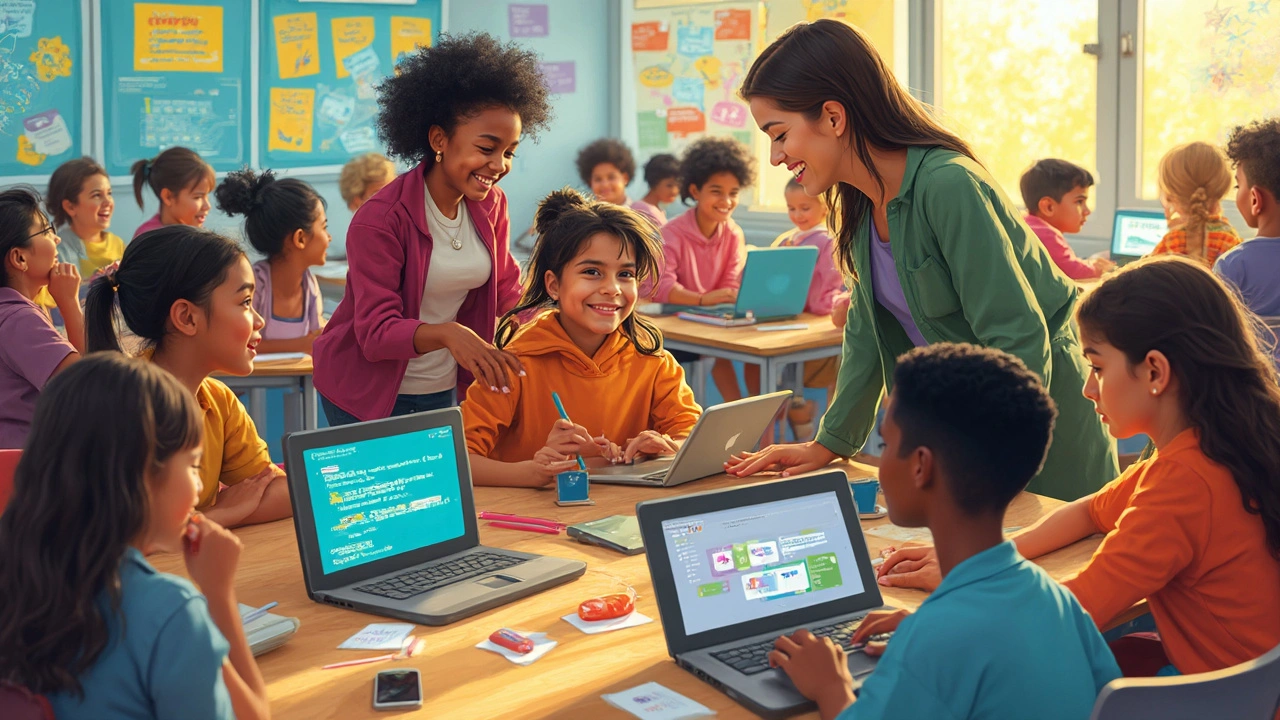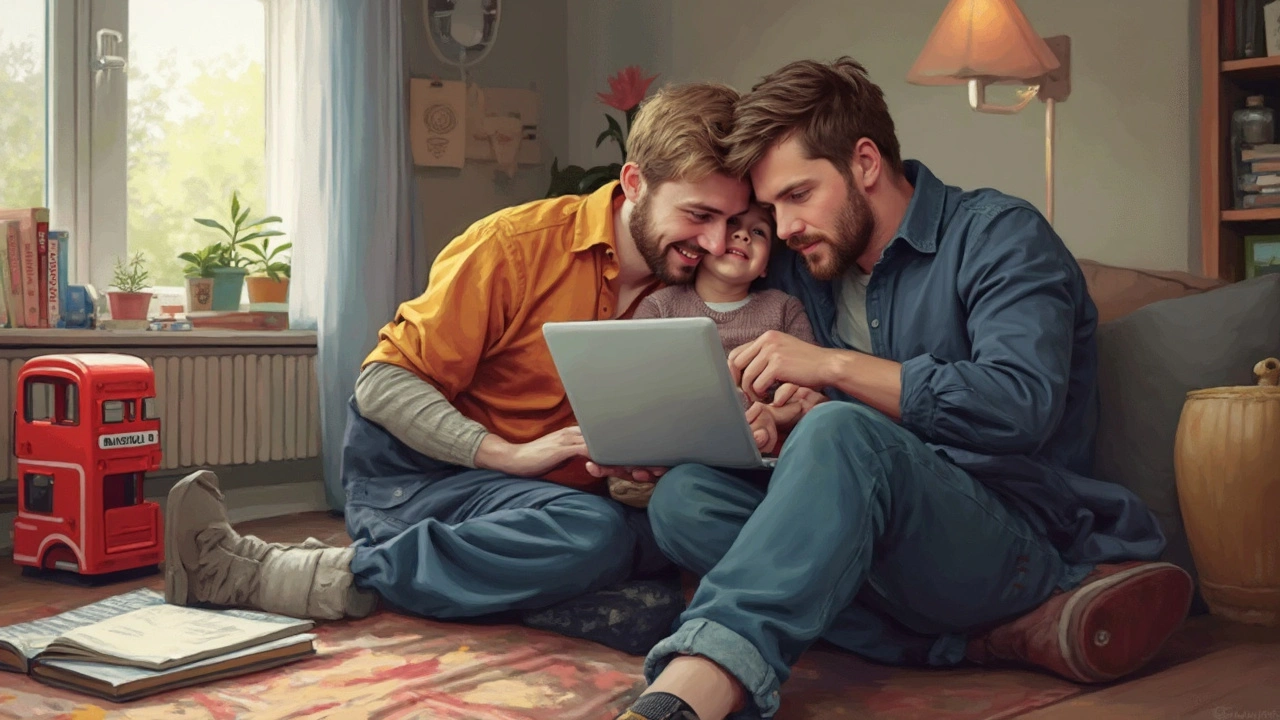Coding Skills: Fueling the Future of Young Innovators

Remember when learning to type was a big deal in school? Now, kids are picking up coding before they even know what "WPM" means. Coding doesn’t just land you a job at some fancy startup—it teaches you how to solve problems, work in teams, and bring your ideas to life. If you can make a video game or an app, you’re turning your imagination into something people can actually use. That’s got real power.
Here’s the surprising thing: you don’t need a background full of tech geniuses to get started. Tools like Scratch and Code.org break things down so anyone, even kids as young as seven, can drag and drop code blocks and actually see something happen. It’s about experimenting, failing, tweaking, and finally making things work. You learn fast that it’s okay to mess up because every mistake is just another step closer to getting it right.
- Why Coding Skills Matter More Than Ever
- Breaking Down Barriers: Coding for Every Kid
- Real-Life Stories of Young Coders
- Getting Started: Tips for Kids, Parents, and Teachers
Why Coding Skills Matter More Than Ever
You might hear people say that coding skills are the new literacy, and honestly, it’s starting to look that way. Our lives are packed with apps, websites, and smart gadgets, and all of them run on code. In the US alone, there are now over 1.4 million computing jobs, but less than 500,000 qualified applicants, according to Code.org. That’s a wild gap—if kids start learning code early, they’re building a safety net for the future, no matter what career they chase.
But it’s not just about landing high-paying jobs. Think about how kids today use tech for pretty much everything—homework, gaming, chatting with friends. If they know even a little bit about coding, they understand how things work and can fix problems, instead of just getting frustrated when something glitches. It’s like learning to cook instead of just microwaving frozen dinners the rest of your life.
Another big deal: learning coding skills boosts creativity and confidence. It’s not just for math whizzes—plenty of creative kids make art, animations, or music with code. In 2023, a study from the University of Washington found that students who learned coding showed better problem-solving abilities, because writing code forces you to think step-by-step and test your ideas until they work. That’s a life skill, whether you end up in tech or not.
- Digital literacy: The world is going digital, fast. If you know how to code, you don’t just use technology—you control it.
- Collaboration: Most coding projects are team efforts. Kids learn how to talk through problems and work together, skills every boss wants.
- Better opportunities: Nearly every field, from healthcare to sports, now hires people with coding chops. It’s a ticket into a bunch of careers that didn’t even exist ten years ago.
| Year | Computer Science Jobs (US) | Qualified Applicants |
|---|---|---|
| 2023 | 1,400,000+ | 500,000 |
The bottom line? Coding isn’t just for future engineers or Silicon Valley types. Understanding code means understanding the world you live in—and that’s an edge you want your kids to have.
Breaking Down Barriers: Coding for Every Kid
The old idea that coding skills are just for math whizzes or people with expensive laptops is out the window. Coding is spreading into every classroom—from small rural schools to city centers, even in places where computer access used to be a big problem. Platforms like Khan Academy, Code.org, and Scratch are totally free and run on just about any device, including low-cost Chromebooks, tablets, or even some phones.
What’s cool is that a lot of schools now treat coding like reading or math. According to a 2023 report from Code.org, over 50% of U.S. high schools offer at least one computer science course. And it’s not just about teaching kids to use technology—it’s about helping every kid build confidence and feel included. Coding clubs, after-school classes, and even some public libraries run free workshops so nobody’s left out.
| Barrier | How It's Being Solved |
|---|---|
| Lack of computers | Mobile-friendly coding platforms & community laptop donations |
| Intimidation factor | Drag-and-drop tools like Scratch lower the entry bar |
| Limited teachers | Online tutorials, free teacher training, peer mentoring |
| Gender gap | Programs like Girls Who Code offer supportive spaces |
One thing people miss: coding doesn’t have to mean “sit alone and stare at a screen.” Today, projects are hands-on—like building robots out of LEGO, making digital stories, or designing simple games to share with friends. This teamwork draws in all kinds of kids, not just the ones who call themselves “techy.”
Parents sometimes worry they need to know how to code to help, but that’s not true. Asking questions, helping kids set goals, or just showing genuine interest is enough. The best thing? With all these new resources and communities, every kid now has a shot at digital literacy—and that opens up a whole new world of possibilities.

Real-Life Stories of Young Coders
Nothing makes coding skills click for people quite like seeing kids actually changing the world with it. Check out this: in 2022, a 13-year-old from India named Tanmay Bakshi was already working with IBM on artificial intelligence projects. Yeah—while most teens are thinking about their next snack, Tanmay was writing programs to help people with disabilities communicate more easily. You read that right. And he didn’t come from some big tech family or exclusive school.
Then there’s Emma Yang, who was just 12 when she created "Timeless," an app to help people with Alzheimer’s remember loved ones and daily tasks. Emma learned coding by trial and error, mostly with online videos and the guidance of her family. Her story shows how kids programming can spark big ideas that actually help people in real life.
Want some numbers? According to a 2023 survey by Code.org, more than 70% of U.S. high schools offered some kind of computer science course, and over half a million kids were enrolled in coding clubs or classes that year. The point: these aren’t rare unicorn stories. More kids are learning to code, everywhere. Some are even starting their own small businesses—like Hannah Herbst, who used her coding and engineering skills, at age 15, to create a device that converts ocean currents into energy for developing countries.
Here’s what keeps showing up in these stories:
- Most young coders start with simple projects, often with drag-and-drop apps or game makers.
- Access to a helpful community—online forums, school clubs, or even just a group of friends—makes a huge difference.
- It’s usually curiosity and a personal problem that gets them started—not some big plan to change the world. The world-changing stuff comes later.
Parents are catching on too. A 2024 Pew Research study showed a 40% jump in parents encouraging their kids to learn digital literacy and basic code, even in families with no tech background.
These stories prove it: coding is not just for the math geniuses and Silicon Valley types. If you’ve got curiosity and a laptop, you can do impressive things—even if you still need help with your algebra homework.
Getting Started: Tips for Kids, Parents, and Teachers
Tackling coding skills early gives kids a serious edge, but figuring out how to start can feel confusing. The good news? You don’t need expensive computers or a degree in software engineering. Kids can learn on a phone, tablet, or even with unplugged activities using cards or simple logic puzzles.
For kids, curiosity is the real fuel. Free platforms like Code.org, Scratch, and Khan Academy let you build games or animations with simple steps. Messing around and breaking things is part of the process—the biggest breakthroughs come from playing, testing, and fixing. No need to memorize code. Instead, focus on understanding the logic: "If I do this, what happens?"
Parents don’t have to be tech whizzes. Show interest, ask questions, and celebrate small wins. Libraries often run free workshops, and YouTube is packed with helpful tutorials. If your kid gets stuck, look for community forums or local coding clubs—they’re everywhere now, and most welcome total beginners. Here’s a tip: set little challenges, like making a bouncing ball game or sending an email to grandma from a homemade app.
- Try 20-minute “code sprints” together—keep sessions short and focused to avoid burnout.
- Use “unplugged” games to teach coding concepts away from screens—think of giving step-by-step instructions to walk across the room blindfolded or stacking cups by code-like commands.
- Celebrate errors. Every glitch is a lesson, not a defeat.
Teachers have tons of free curriculum options. Google’s CS First and Microsoft’s MakeCode offer classroom-friendly lessons. Even basics like binary numbers or logic puzzles lay the foundation. Peer learning is super effective; encourage kids to work together and explain their ideas out loud, even if they argue over whose idea is better.
| Platform | Age Range | Cost |
|---|---|---|
| Scratch | 7-16 | Free |
| Code.org | 4-18 | Free |
| Khan Academy | 10+ | Free |
| CS First (Google) | 9-14 | Free |
The goal isn’t to turn every kid into a coder overnight. It’s giving everyone the tools to tinker, explore, and not be afraid of breaking tech. You never know what spark will catch—and where it’ll lead in the world of digital literacy and tech empowerment.